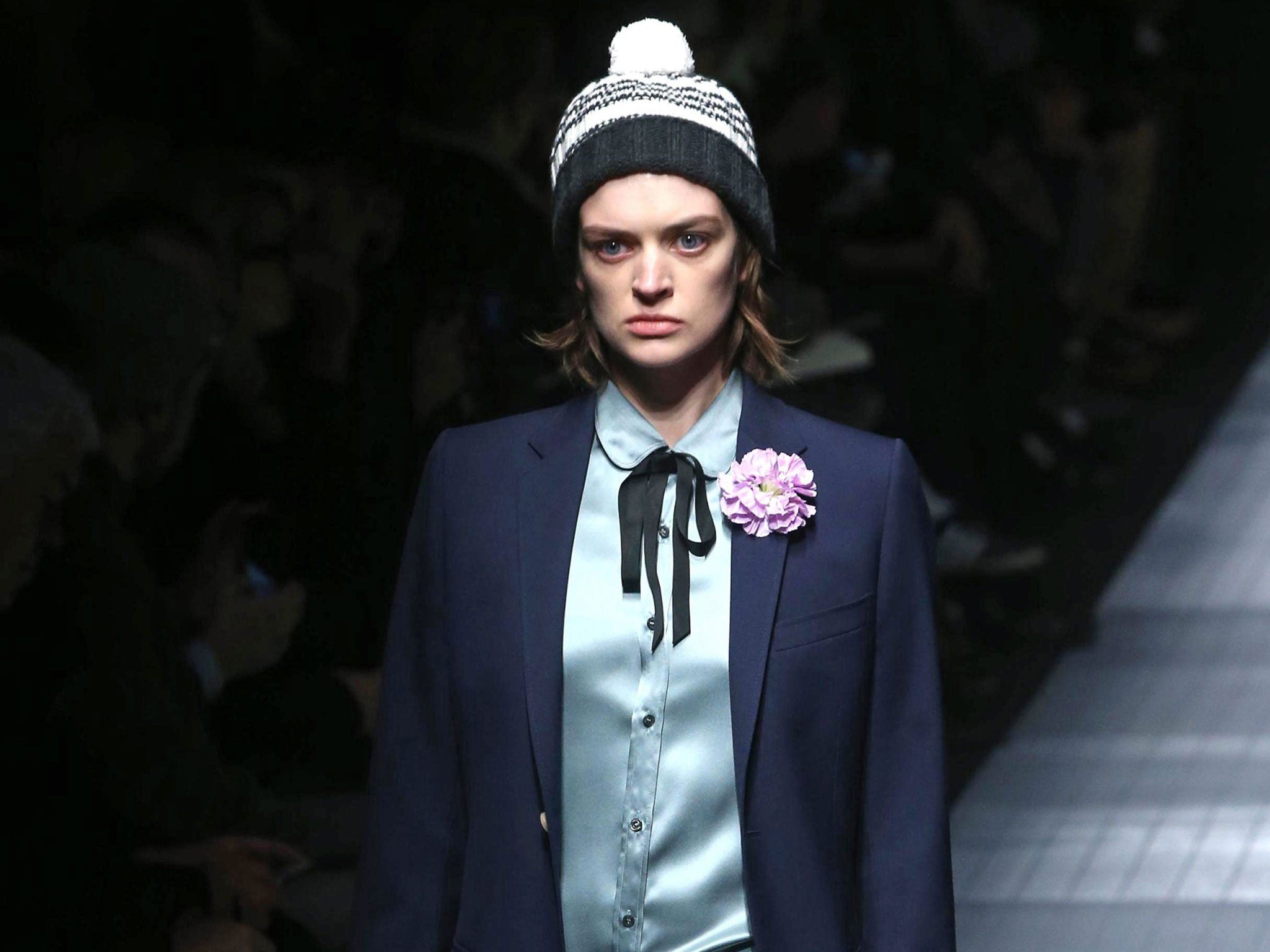Milan Fashion Week: Leaderless fashion label Gucci embraces romance and bohemian camp
The next step? Appointing that all-important design head

Your support helps us to tell the story
From reproductive rights to climate change to Big Tech, The Independent is on the ground when the story is developing. Whether it's investigating the financials of Elon Musk's pro-Trump PAC or producing our latest documentary, 'The A Word', which shines a light on the American women fighting for reproductive rights, we know how important it is to parse out the facts from the messaging.
At such a critical moment in US history, we need reporters on the ground. Your donation allows us to keep sending journalists to speak to both sides of the story.
The Independent is trusted by Americans across the entire political spectrum. And unlike many other quality news outlets, we choose not to lock Americans out of our reporting and analysis with paywalls. We believe quality journalism should be available to everyone, paid for by those who can afford it.
Your support makes all the difference.Change is afoot at Gucci. That manifested itself literally at the label’s autumn/winter 2015 show, on the penultimate day of the Milanese menswear collections – the house’s customary catwalk replaced by a narrow gangplank of gridded metal.
But more significant were the design-the-scenes implications. Frida Giannini, creative director of Gucci menswear for nine years, did not take a bow. Instead, a rag-tag team of half-a-dozen designers clustered at the head of the catwalk for the finale. Both Giannini and Gucci’s former CEO Patrizio di Marco departed the company earlier this season. Gucci is currently in a state of flux.
That sense – of upheaval and uncertainty – was captured in the clothing on show too. Eschewing the label’s prior repute for ragazzi bravado and retrospective styling, Gucci slanted its winter menswear more romantic and, dare we say, more femme. Sleeves were shrunken, cropped at bracelet length, on blouses – not shirts – back-fastened in crêpe de chine with a pie-crust edging lapping at the wrist. There was chintzed lace and foliate prints, thick fur cuffs on boucle coats cut granny-style to cocoon the figure. A clutch of female models added to the gender-blending confusion.
That idea, of course, is standard as opposed to standout in menswear – on the catwalk if not actually on blokes’ backs. It’s been around in force since the Sixties, and there was plenty of riff-referencing on Mick Jagger’s billowing blouses by Ossie Clark, and the general haute bohemian high camp of that decade. Nevertheless, something anchored these looks in the present. Maybe the footwear, either fur-smothered Birkenstock-style sandals or mink-lined crocodile slip-ons, based on Gucci’s signature horsebit loafer, the heel chomped down in back to form a slipper. The reality which those are anchored in is a market hungry for hyper-lucked tweaks on classic items. They’ll do a roaring trade in the new retail hotspots of the middle and Far East: a major consideration considering an alarming drop in Gucci’s profits over the past few years – 2013’s profits were reported as the lowest in four years.
A turnaround is needed. And this collection – although marked by the lack of a single, decisive creative leader either in the design studio or bowing on the catwalk – represented the start. Rather than a proposal for the future, then, maybe this collection was intended to demarcate a break with the past. Certainly the fact that the label eschewed it’s traditional smoke-and-mirror showroom presentation, a hangover from the Tom Ford glory years of over a decade hence, showed it’s willingness to change. And the recognition of its necessity.
The next step? Appointing that all-important design head. Design by committee is fine for a season or two, but a multi-billion behemoth like Gucci needs focus for its future.
Join our commenting forum
Join thought-provoking conversations, follow other Independent readers and see their replies
Comments